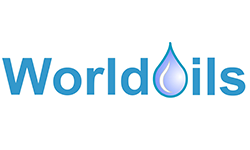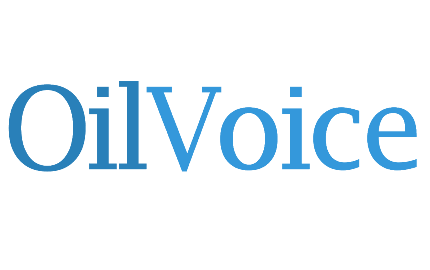API 510 - Pressure Vessel Inspector Course
The course prepares the professional for the API 510 exam, answering questions like "what is API 510". The course is an intensive one-week course with a heavy emphasis on the use of codes and mathematical calculations.
API Authorized Pressure Vessel Inspectors must have a broad knowledge base relating to the maintenance, inspection, repair, and alteration of pressure vessels. The API 510 Certification Preparation is designed to equip the professional with such information and understand the exam format. The course will prepare the professional with both parts of the exam, the closed and open book portion.
This is an intense course with daily homework and a final exam (similar to the API 510 exam). A study guide is issued to direct participants’ pre-class study.
Day 1 of API 510 Training
Module 1
- Welcome and Introduction Overview of API 510 Course
Module 2: Joint Efficiency
- Weld Joint Categories from UW-3;
- Type of radiography (full, spot, or none, RT-1, RT-2, etc.)
- Joint efficiency by reading Table UW-12)
- Joint efficiency for seamless heads and vessels Sections per UW-12 (d); and
- Joint efficiency for welded pipe and tubing per UW-12 (e)
Module 3: Thickness Calculations
- The required thickness of a cylindrical shell (UG-27(c)(1));
- The vessel part MAWP for a cylindrical shell
- The required thickness of a head-Hemispherical, Ellipsoidal, torispherical
- The vessel part MAWP for a head
Module 4: Static Head
- Calculate static head pressure on any vessel part
- Calculate total pressure (MAWP + static head) on any vessel part
- Calculate maximum vessel MAWP given vessel parts MAWP and elevations
Module 5: External Pressure and Impact Testing
- Calculate the maximum allowable external pressure
- Calculate whether a cylindrical shell meets the Code design for external pressure.
- Determine the minimum metal temperature of a material that is exempt from impact testing (UG-20 (f), UCS-66, UCS-68(c).
Day 2 of API 510 Training
Module 1: Pressure Testing
- Calculate a test pressure compensating for temperature. (UG-99 & UG-100)
- The precautions associated with hydrostatic and pneumatic testing,
- Steps in the hydro test procedure (UG 99 and UG 100)
- All steps in a pneumatic test procedure (UG 100 and UG 102)
Module 2: Weld Size For Attachment Welds at Openings
- Conversion of a fillet weld throat dimension to leg dimension, the conversion factor(0.707)
- Determine the required size of welds at openings (UW-16).
Module 3: Nozzle Reinforcement
- Key concepts of reinforcement, such as replacement of strength and limits of reinforcement.
- Credit for the extra metal in the shell and nozzle
- Calculate the required areas for reinforcement
Module 4: Scope of API 510
- General Application
- Specific Applications
- Recognized Technical Concepts
- References
Module 5
- Definitions and Owner/user inspection organization
- General
- Owner/User Organization Responsibilities
Day 3 of API 510 Training
Module 1: Inspection, Examination, and Pressure Testing Practices
- Inspection Plans
- Risk-based Inspection
- Preparation For Inspection
- Inspection For Types Of Damage Modes Of Deterioration And Failure
Module 2
- General Types Of Inspection And Surveillance
- Condition Monitoring Locations
- Condition Monitoring Methods
Module 3
- Pressure Testing
- Material Verification And Traceability
- Inspection Of In-service Welds And Joints
- Inspection Of Flanged Joints
Module 4: Interval/frequency and extent of inspection
- General
- Inspection During Installation And Service Changes
- Risk-based Inspection
- External Inspection
- Internal And On-stream Inspection
- Pressure-relieving Devices
Module 5: Inspection data evaluation, analysis, and recording
- Corrosion Rate Determination
- Remaining Life Calculations
- Maximum Allowable Working Pressure Determination
Module 6
- Fitness For Service Analysis Of Corroded Regions
- API RP 579 Fitness For Service Evaluations
- Required Thickness Determination
- Evaluation Of Existing Equipment With Minimal Documentation
- Reports And Records
Day 4 of API 510 Training
Module 1: Repairs, alterations, and rerating of pressure vessels
- Repairs And Alterations
- Authorization
- Approval
- Materials Requirements
- Welding Requirements
Module 2
- Heat Treating Requirements
- Preheating
- Post-weld Heat Treating
- Local Post-Weld Heat treatment
- Repairs to Stainless Steel Weld Overlay and Cladding
- Rerating
Module 3
- Introduction to ASME Sec. IX
- Welding Procedure tests
- Performance qualification tests
- Acceptance criteria
- Welding positions
- P-No, F-No, and A-No.
- Review of Welding Procedure Specification (WPS); and Procedure Qualification Record (PQR)
- Determine:
- Whether the number and type of mechanical test listed on PQR are appropriate
- Whether the results of the tests are acceptable
- Whether all required essential and non-essential variables have been properly addressed.
Day 5 of API 510 Training
Module 1: API RP 576, Inspection of Pressure-Relieving Devices
- Description of Types -- (API RP-576, Section 2)
- Causes of Improper Performance (API RP-576, Section 4)
- Reasons for Inspection and Frequency Determination (API RP 576, Sections 3 & 5)
- Inspection and Test Service Procedures (API RP-576, Sections 6 and 7)
Module 2
- Article 1, General Requirements:
- Article 2, Radiographic Examination
Module 3
- Article 6, Liquid Penetrant Examination
- Article 7, Magnetic Particle Examination (Yoke and Prod techniques only):
- Article 23, Ultrasonic Standards, Section SE–797
Module 4: API RP 576, Inspection of Pressure-Relieving Devices
- Description of Types (API RP-576, Section 2)
- Causes of Improper Performance (API RP-576, Section 4)
- Reasons for Inspection and Frequency Determination (API RP 576, Sections 3 & 5)
- Inspection and Test Service Procedures (API RP-576, Sections 6 and 7)
Module 5 (1 hour + 1 hour discussion)
- Practice Examination-Open Book Practice Examination-Closed BookFeedback and Closing
What is API 510 training course objective?
- Successfully pass the API 510 pressure vessel inspector certification exam
- Effectively use major codes: ASME B&PV Sections V, VIII, & IX
- Perform all basic vessel calculations needed for the API exam (e.g. min, test pressure, MAWP, static head, MDMT, corrosion rates, remaining life, etc.)
- Use API’s requirements during inspection, repairs, and alterations of pressure vessels
- Review welding procedures (WPS/PQR) and welder performance qualifications (WPQ)
What you must bring to class
Students should bring to class: a calculator, a straight edge (or triangle), pencils, highlighters, lots of questions, and a “can-do” attitude. Also, participants must bring the appropriate codes required for the API exam (see API website: www.api.org/icp)
Who should join API 510 training course by PetroSync?
This course will specifically benefit Engineers, Supervisors, and Managers from the following disciplines:
- Mechanical Engineering
- Inspection
- Maintenance & Operations
- Technical & Engineering
- QAQC
and technical personnel with 2-3 years of experience in the management and planning of inspection and maintenance activities of pressure vessel systems at upstream oil & gas facilities, refineries, process plants, and petrochemical facilities.
Chintamani M. Khade
Chintamani M. Khade is a specialist on Materials & Damage Mechanisms. He has more than 19 years experience as Department Head of NDT, Welding Inspection, In Service Inspection in India, Middle East, Southeast Asia & Africa. Currently, he is the technical director of Empirical Technocrats.
He conducted training for various API Certification Preparatory, NDE methods, ASNT & ISNT Level III, advanced NDT Methods, welding inspection, Construction codes, ASME Sections II, Section IX, Section V, ASME Sec. VIII div. 1, ASME B31.1, ASME B31.3, AWS D1.1, UT, MT, PT, VT, RT & Basic for ISO 9712 level 2 & level 3.
He has been a team leader of 100+ multidiscipline NDT technicians, metallurgists & Welding inspectors during various shutdown jobs in Qatar Petroleum, Massaid refinery, Qatar in March – June 2005, March - April 2009 & October November 2009. Executed in service inspection of nearly 800 pressure vessels, Static & rotary equipments, Plant process piping & storage tanks as shutdown coordinator.
Upcoming Training
- Code PST0086-202502
- Start Date 03 Nov, 2025
- End Date 07 Nov, 2025
- Locations Bandung, Indonesia
- Cost USD 3285
- Code PST0086-202503
- Start Date 08 Dec, 2025
- End Date 12 Dec, 2025
- Locations Kuala Lumpur, Malaysia
- Cost USD 3285
Upcoming Training
| Code | Start Date | End Date | Locations | Cost | Instructor |
|---|---|---|---|---|---|
| PST0086-202502 | 03 Nov, 2025 | 07 Nov, 2025 | Bandung, Indonesia | USD 3285 | Uday B. Kale (M. Eng. Mechanical) |
| PST0086-202503 | 08 Dec, 2025 | 12 Dec, 2025 | Kuala Lumpur, Malaysia | USD 3285 | Chintamani M. Khade |
Past Training
| Code | Start Date | End Date | Locations | Cost | Instructor |
|---|---|---|---|---|---|
| PST0086-201101 | 19 Sep, 2011 | 23 Sep, 2011 | Kuala Lumpur, Malaysia | SGD 2995 | Uday B. Kale (M. Eng. Mechanical) |
| PST0086-201302 | 19 Aug, 2013 | 23 Aug, 2013 | Kuala Lumpur, Malaysia | SGD 2995 | Uday B. Kale (M. Eng. Mechanical) |
| PST0086-201301 | 02 Dec, 2013 | 06 Dec, 2013 | Kuala Lumpur, Malaysia | SGD 2995 | Uday B. Kale (M. Eng. Mechanical) |
| PST0086-201401 | 19 May, 2014 | 23 May, 2014 | Kuala Lumpur, Malaysia | SGD 2995 | Uday B. Kale (M. Eng. Mechanical) |
| PST0086-201402 | 01 Sep, 2014 | 05 Sep, 2014 | Bandung, Indonesia | SGD 2995 | Uday B. Kale (M. Eng. Mechanical) |
Related Course
API 571 - Damage Mechanisms Affecting Fixed Equipment in the Refining Industry
Chintamani M. Khade
Read moreAPI 571 - Damage Mechanisms Affecting Fixed Equipment in the Refining Industry
Chintamani M. Khade
Read moreAPI 580 and 581 - Risk-Based Inspection & Base Resource Document
Chintamani M. Khade
Read moreAPI 653 - Tank Inspection, Repair, Alteration, and Reconstruction
Chintamani M. Khade
Read more



